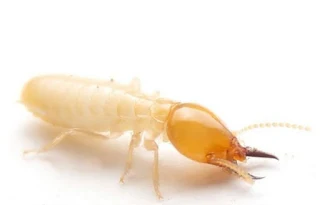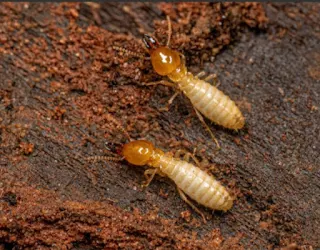Subterranean termites, often referred to as "silent destroyers," pose a significant threat to wooden structures worldwide. These voracious insects are known for their ability to cause extensive damage to homes, buildings, and other wooden structures, often without being detected until it's too late. In this article, we will explore the biology and behaviour of subterranean termites, their ecological impact, signs of infestation, prevention methods, and treatment options.
Introduction to Subterranean Termites
Subterranean termites are a species of termite that live underground in colonies with millions of members. They are found in most parts of the world and are particularly common in tropical and subtropical regions. These termites feed on cellulose, which is found in wood and plant materials, making them a significant threat to wooden structures.
Biology and Behaviour
Subterranean termite colonies are typically composed of three main castes: workers, soldiers, and reproductives. Workers are responsible for foraging for food and maintaining the colony; soldiers defend the colony from predators; and reproductives are responsible for reproducing and establishing new colonies.
These termites build elaborate tunnel systems to access food sources and protect themselves from predators and environmental conditions. They can travel up to 100 metres from their colony to find food, making it easy for them to infest nearby wooden structures.
Ecological Impact
While subterranean termites play a crucial role in the ecosystem by breaking down dead plant material, they can also have a significant negative impact on the environment. The destruction of wooden structures by termites can lead to economic losses and environmental degradation.
Additionally, the use of chemical pesticides to control termite populations can have harmful effects on the environment and human health. Therefore, it is essential to use environmentally friendly methods to control termite infestations whenever possible.
The economic impact of subterranean termites
The economic impact is staggering, with billions of dollars spent annually on the prevention, treatment, and repair of termite damage. In the United States alone, it is estimated that termites cause over $5 billion in damage each year, making them one of the most destructive pests faced by homeowners and businesses.
The cost of termite damage can vary widely, depending on the extent of the infestation and the type of structure affected. In severe cases, termites can cause structural damage that requires extensive repairs or even the demolition of the affected building. Additionally, the cost of treating and preventing termite infestations can be significant, especially for large structures or buildings with a history of termite problems.
Environmental Impact and Sustainability
While subterranean termites play a vital role in the ecosystem by breaking down dead plant material, their impact on the environment can be detrimental when they infest wooden structures. The use of chemical pesticides to control termite populations can have harmful effects on the environment and human health, making it essential to use environmentally friendly methods whenever possible.
Promoting sustainable practices in construction and pest control can help minimise the environmental impact of subterranean termites. Using termite-resistant materials, such as treated wood or alternative building materials, can help reduce the risk of infestation and limit the need for chemical treatments.
Future research and innovation
As the threat of subterranean termites continues to grow, there is a need for ongoing research and innovation in termite control methods. Developing new, more effective treatments that are environmentally friendly and sustainable is crucial for managing termite populations and reducing the economic impact of infestations.
Research into termite behaviour, biology, and ecology can also help improve our understanding of these pests and lead to new strategies for prevention and control. By investing in research and innovation, we can better protect our wooden structures and minimise the impact of subterranean termites on our homes and businesses.
Signs of Infestation
Detecting a subterranean termite infestation early is crucial for minimising damage to wooden structures.
Mud tubes: Subterranean termites build mud tubes to travel between their colony and a food source. These tubes are typically found along the foundation of a structure or on wooden surfaces.
Discarded wings: After swarming, termites will shed their wings, which can often be found near windows, doors, or other entry points.
Hollow-sounding wood: Termites feed on the inside of wooden structures, leaving the outer layers intact. If the wood sounds hollow when tapped, it may indicate a termite infestation.
Prevention Methods
Preventing a subterranean termite infestation is much easier and less expensive than treating one. Some effective prevention methods include:
Eliminating moisture: Termites are attracted to moisture, so it is essential to fix any leaks or drainage issues around your home.
Removing wood-to-soil contact: Termites can easily access wooden structures that are in direct contact with the soil. Using termite-resistant materials or creating a barrier between wood and soil can help prevent infestations.
Regular inspections: Inspecting your home regularly for signs of termite activity can help detect infestations early and prevent extensive damage.
Treatment Options
If you suspect that your home has a subterranean termite infestation, it is essential to contact a pest control professional immediately. Some common treatment options for subterranean termites include the following:
Soil treatment: Applying liquid termiticides to the soil around the foundation of a structure can create a barrier that prevents termites from entering.
Baiting systems: Baiting systems are designed to attract termites and then deliver a slow-acting poison that is carried back to the colony, eventually eliminating it.
Wood treatment: Treating wooden structures with borate-based products can help prevent termite infestations and protect against future damage.
In conclusion, subterranean termites are a significant threat to wooden structures worldwide, causing billions of dollars in damage each year. Understanding their biology, behaviour, and impact on the environment is crucial for effective prevention and management. By implementing sustainable practices and investing in research and innovation, we can better protect our homes and businesses from these silent destroyers.
Subterranean termites are a silent but significant threat to wooden structures worldwide. Understanding their biology and behaviour, along with implementing effective prevention methods, is crucial for protecting your home from these destructive pests. If you suspect that your home has a termite infestation, it is essential to contact a pest control professional immediately to prevent further damage.
Subterranean termites are a persistent threat to wooden structures, capable of causing extensive damage before they are detected. Understanding their biology, behaviour, and ecological impact is crucial for effective prevention and management.
Regular inspections, moisture control, and eliminating wood-to-soil contact are key preventive measures. If an infestation is suspected, prompt action by a pest control professional is essential. Treatment options range from soil treatments to baiting systems, each with its advantages and considerations.
Ultimately, combating subterranean termites requires a multifaceted approach that considers environmental impact, economic factors, and long-term sustainability. By staying vigilant and implementing preventive measures, we can protect our wooden structures and minimise the impact of these silent destroyers.
What are subterranean termites, and why are they considered a threat to wooden structures?
Subterranean termites are a species of termite that live underground in colonies and feed on cellulose found in wood and plant materials. They are considered a threat to wooden structures because they can cause extensive damage, often without being detected until it's too late.
What are the main castes found in a subterranean termite colony, and what are their roles?
The main castes found in a subterranean termite colony are workers, soldiers, and reproductives. Workers are responsible for foraging for food and maintaining the colony; soldiers defend the colony from predators; and reproductives are responsible for reproducing and establishing new colonies.
How do subterranean termites build and use tunnel systems?
Subterranean termites build elaborate tunnel systems to access food sources and protect themselves from predators and environmental conditions. They can travel up to 100 metres from their colony to find food, making it easy for them to infest nearby wooden structures.
What is the ecological impact of subterranean termites?
While subterranean termites play a crucial role in the ecosystem by breaking down dead plant material, they can also have a significant negative impact. The destruction of wooden structures by termites can lead to economic losses and environmental degradation.
What are some common signs of a subterranean termite infestation?
Some common signs of a subterranean termite infestation include mud tubes along the foundation of a structure or on wooden surfaces, discarded wings near windows or doors, and wood that sounds hollow when tapped.
What are some effective methods for preventing a subterranean termite infestation?
Some effective methods for preventing a subterranean termite infestation include eliminating moisture sources, removing wood-to-soil contact, and conducting regular inspections for signs of termite activity.
What are some treatment options for a subterranean termite infestation?
Treatment options for a subterranean termite infestation include soil treatments with liquid termiticides, baiting systems that attract termites and deliver a slow-acting poison, and wood treatments with borate-based products.
What is the economic impact of subterranean termites?
The economic impact of subterranean termites is significant, with billions of dollars spent annually on the prevention, treatment, and repair of termite damage. In the United States alone, termites cause over $5 billion in damage each year.
What is the environmental impact of subterranean termites, and how can it be mitigated?
While subterranean termites play a vital role in the ecosystem, their impact on the environment can be detrimental when they infest wooden structures. Using sustainable practices in construction and pest control, such as termite-resistant materials and environmentally friendly treatments, can help mitigate their impact.
What is the importance of research and innovation in managing subterranean termite populations?
Research and innovation are crucial for developing new, more effective treatments for subterranean termites that are environmentally friendly and sustainable. Investing in research can also improve our understanding of termite behaviour and lead to new strategies for prevention and control.





